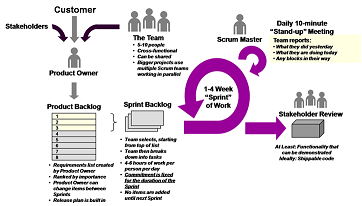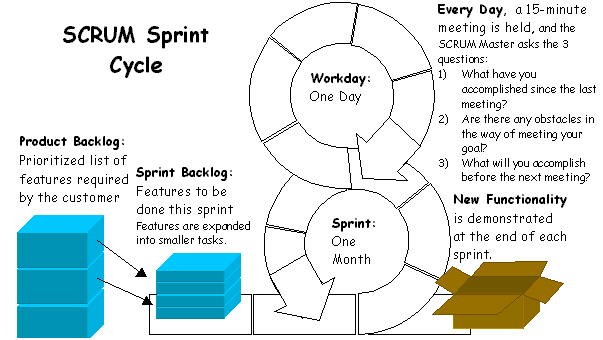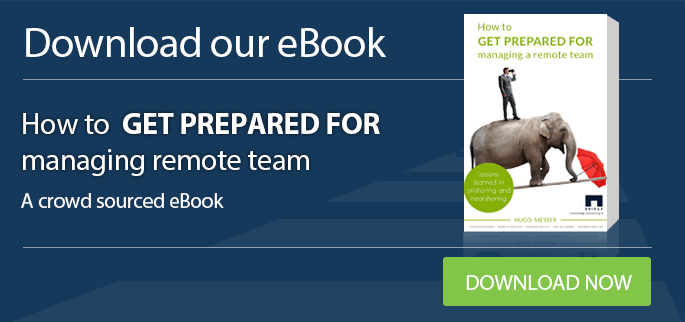Simply ScrumSimply ScrumSimply ScrumSimply Scrum
 Scrum is an agile software development framework for managing software projects or application development. Agile just means an iterative, incremental development approach with realistic calculations and self-planned approach. A key principle of Scrum is its recognition that during a project the customers can change their minds about what they want and need.
Scrum is an agile software development framework for managing software projects or application development. Agile just means an iterative, incremental development approach with realistic calculations and self-planned approach. A key principle of Scrum is its recognition that during a project the customers can change their minds about what they want and need.
Overview:
In Scrum, projects are divided into work units, known as sprints, which are typically one week, two weeks, or three weeks in duration. At the end of each sprint, stakeholders and team members meet to assess the progress of a project and plan its next steps. This allows a project’s direction to be adjusted or reoriented based on completed work, not speculation or predictions. Scrum uses the real-world progress of a project — not a best guess or uninformed forecast — to plan and schedule releases.
Roles:
Product Owner: In Scrum, the Product Owner is responsible for communicating the vision of the product to the development team. He or she must also represent the customer’s interests through requirements and prioritization.
Scrum Master: The ScrumMaster acts as a facilitator for the Product Owner and the team. The SM doesn’t manage the team. Instead, he/ she works to remove any impediments that are obstructing the team from achieving its sprint goals, and is not a traditional team lead or project manager. The SM ensures that the Scrum process is used as intended
Team Member: In the Scrum methodology, the team is responsible for completing work. Team consist of Developers, QA team members, GUI experts and Team lead. Team size in scrum should fall in between 3-9 peoples.
Events:
Sprint planning meeting
- Happens at the beginning of the sprint cycle to select what works to be done.
- Prepare the Sprint Backlog that details the time it will take to do that work, with the entire team
- Identify and communicate how much of the work is likely to be done during the current sprint
- Eight-hour time limit
Daily Scrum meeting
- All members of the development team come prepared with the updates for the meeting.
- The meeting starts precisely on time even if some development team members are missing.
- The meeting should happen at the same location and same time every day.
- The meeting length is set to max of 15 minutes.
- All are welcome, but normally only the core roles speak.
- During the meeting, each team member answers three questions:
- What have you done since yesterday?
- What are you planning to do today?
- Any blocks or pressing issues? Any such item identified in this meeting is documented by the Scrum Master and worked towards resolution outside of this meeting. No detailed discussions shall happen in this meeting.
Sprint Review Meeting:
- Review the work that was completed and the planned work that was not completed
- Present the completed work to the stakeholders (a.k.a. “the demo”). Incomplete work cannot be demonstrated
- Four-hour time limit, facilitated by Team Lead in presence of Scrum master
Sprint Retrospective:
- All team members reflect on the past sprint
- Make continuous process improvements
- Two main questions are asked in the sprint retrospective:
- Three-hour time limit, facilitated by Scrum master
- What went well during the sprint?
- What could be improved in the next sprint?
Items:
Product backlog (PBIs): is an ordered list of requirements that is maintained for a product. The product backlog and the business value of each backlog item is the responsibility of the Product Owner.
Sprint backlog: is the list of work the Development Team must address during the next sprint, those selected from PBIs, from the top of the product backlog by the Development Team. It’s the property of the Development Team
BurnDown Chart : The sprint burndown chart is a publicly displayed chart showing remaining work in the sprint backlog. Updated every day, it gives a simple view of the sprint progress.





